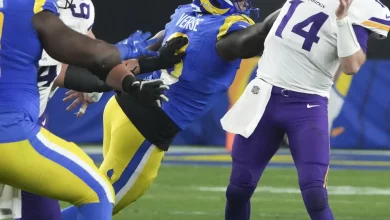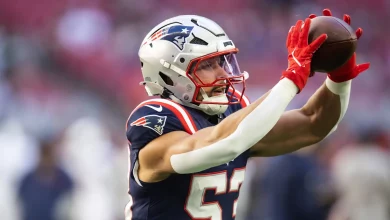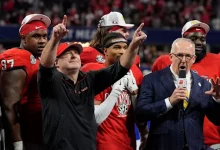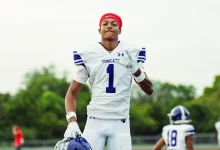Georgia Bulldogs Undergoing Athletic Department and Collective Changes
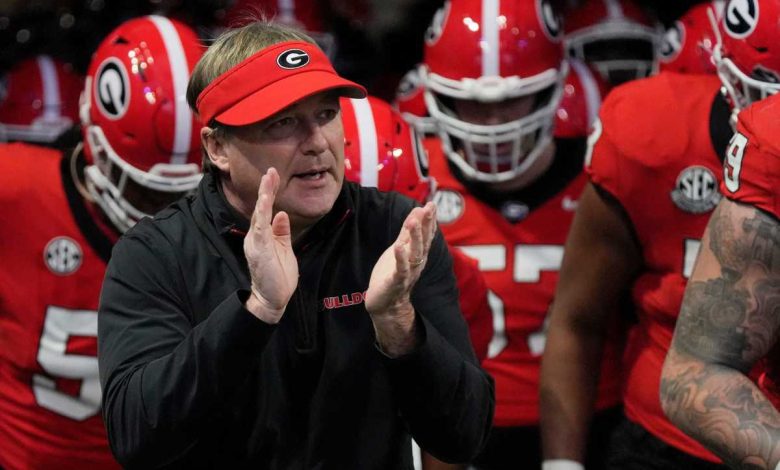
The Georgia Bulldogs, one of the most storied and successful programs in college athletics, are currently undergoing a series of significant changes within their athletic department and NIL collective, ushering in a new era of growth, transformation, and competitiveness. As the Bulldogs continue to be a dominant force in college football, their efforts to elevate all of their athletic programs, increase financial support, and adapt to the rapidly changing landscape of collegiate sports are becoming increasingly important.
While football remains the cornerstone of Georgia’s athletic success, the University of Georgia (UGA) has always prided itself on excellence in a range of sports, including basketball, baseball, track and field, gymnastics, soccer, and swimming and diving. The combination of a rich sports heritage, a passionate fanbase, and strategic organizational shifts is helping position Georgia’s athletic department for long-term success both on and off the field.
This article takes a deep dive into the ongoing changes at UGA’s athletic department, including the transformation of their NIL collective, improvements in infrastructure, changes in leadership, and the program’s efforts to stay competitive in a rapidly evolving collegiate sports world.
1. Athletic Department Overhaul: A Commitment to Excellence
As UGA’s athletic programs continue to thrive, the athletic department has focused on making both structural and strategic changes to ensure they remain at the top of college sports. These changes are driven by the realization that the sports landscape is evolving rapidly, and in order to stay competitive, the department must adapt in key areas such as revenue generation, player development, recruitment, and overall program investment.
Leadership Changes: A Renewed Vision for Georgia Athletics
A major part of the recent overhaul at UGA is centered around leadership. The university’s athletic director, Josh Brooks, who took over the role in 2021, has been pivotal in driving the department’s new initiatives. Brooks, a UGA alum, has extensive experience in college athletics, having served as the deputy athletics director before becoming the athletic director. His deep understanding of Georgia’s athletic programs and vision for the future has played a key role in shaping the changes currently taking place.
Brooks is overseeing a comprehensive review of how UGA’s athletic programs are organized and managed, focusing on improving efficiencies, increasing financial support, and creating a more robust infrastructure. Under his leadership, Georgia’s athletic department is investing more resources into strengthening support staff, providing enhanced player development opportunities, and upgrading athletic facilities to meet the demands of modern college sports.
In addition to internal management, Brooks and his team have made significant strides in improving Georgia’s partnerships with major corporate sponsors, ensuring that the Bulldogs’ revenue-generating potential remains strong as NIL (Name, Image, Likeness) deals and other factors increasingly shape the financial landscape of college athletics.
Expansion and Enhancement of Facilities
One area where Georgia is placing significant focus is in the expansion and enhancement of their athletic facilities. Georgia has already made major strides in the past few years with the construction of state-of-the-art facilities for their football team, such as the Butts-Mehre Heritage Hall, which houses the Bulldogs’ football offices, weight rooms, and meeting spaces. However, Georgia is not resting on its laurels and is now looking to extend similar investments across all sports.
Basketball, baseball, and soccer are all receiving substantial upgrades to their training, practice, and competition facilities. By creating top-tier facilities across the board, UGA aims to ensure that every athletic program has the resources needed to recruit top-tier talent and compete at the highest levels.
For example, the Basketball Performance Center, which will provide the Bulldogs’ men’s and women’s basketball programs with dedicated spaces for training and conditioning, is a key step toward elevating UGA’s basketball programs to national relevance. Similarly, Georgia’s baseball program has seen a major boost with improvements to Foley Field, helping the Bulldogs maintain their status as a perennial contender in college baseball.
This ongoing investment in infrastructure is not just about enhancing the student-athlete experience, but also about showcasing the university’s commitment to providing all programs with the necessary tools for success.
2. The Evolution of the NIL Collective: Navigating the Changing Financial Landscape
While the leadership changes and facility improvements have garnered significant attention, the most significant transformation within Georgia’s athletic department is arguably the rise of its NIL collective and how UGA is adapting to the new era of college sports in the NIL space. The NIL revolution, which grants student-athletes the right to profit from their name, image, and likeness, has drastically altered the financial landscape of college sports.
The DawgNation Collective: Empowering Student-Athletes
At the center of Georgia’s NIL strategy is the DawgNation Collective, a powerful organization designed to support Georgia’s student-athletes and help them maximize their earning potential in the ever-evolving NIL ecosystem. The collective has been instrumental in securing sponsorships, brand partnerships, and endorsement deals for Georgia athletes, ensuring that they have access to the resources and financial support that was previously unavailable in the college sports world.
By partnering with local businesses and national brands, DawgNation has created a platform where Georgia athletes can connect with fans and sponsors alike. This initiative allows Bulldogs student-athletes across all sports to leverage their platforms, whether they are on the football field, basketball court, or elsewhere, for financial gain. This not only helps them personally, but also attracts recruits who want to be part of a program where they can thrive both on the field and financially.
DawgNation’s influence is growing, and the collective has already secured partnerships with several high-profile brands. It is working closely with Georgia’s athletic department to ensure that the school’s athletes are prepared for the business of NIL, providing education, training, and resources to help them navigate the complexities of branding, marketing, and contracts. This strategy puts Georgia on the cutting edge of NIL innovation and is crucial to keeping the Bulldogs competitive in recruiting.
Expanding NIL for Non-Football Athletes
One important aspect of UGA’s NIL collective that deserves attention is its efforts to expand opportunities for athletes outside of football, the sport where most NIL deals have concentrated. While football players naturally attract the most attention in the NIL space, Georgia’s collective has made efforts to ensure that athletes from women’s sports, basketball, track and field, baseball, and other Olympic sports also have the chance to benefit financially from their name, image, and likeness.
This forward-thinking approach positions Georgia as one of the most progressive athletic programs in the country when it comes to supporting female athletes and athletes from traditionally less visible sports. With rising stars like Jasmine Carson (basketball) and Track & Field’s Kendal Williams, the Bulldogs are demonstrating that NIL is not just about football stars—it’s about empowering all student-athletes to take advantage of new opportunities.
Recruiting and Retention Through NIL
As NIL continues to reshape the recruiting landscape, Georgia is in a prime position to attract and retain top talent. Recruiting is no longer just about athletic prowess; it’s also about how universities can offer players opportunities to maximize their earning potential. With its extensive network of businesses and alumni, Georgia has become a highly attractive option for elite recruits who want to make the most of their athletic and business opportunities during their college careers.
While there has been concern across the nation about NIL deals turning into pay-for-play systems, Georgia’s athletic department has been intentional about balancing the interests of athletes, the university, and potential sponsors. The DawgNation Collective, for example, is focused on creating sustainable and legal NIL opportunities that work within the framework of NCAA regulations.
3. Recruiting and Player Development: Preparing for the Future
As Georgia navigates changes in leadership and the NIL era, it is also prioritizing recruiting and player development. Georgia’s football program, in particular, has thrived under the leadership of head coach Kirby Smart, who has recruited some of the most talented players in the nation to Athens. However, Smart and his staff are keenly aware that they cannot rest on their laurels, and the implementation of the NIL collective is one way the Bulldogs can stay ahead in the arms race of recruiting.
Focus on the Full Student-Athlete Experience
Georgia’s recruiting efforts now extend beyond the gridiron. With the growth of NIL and the increasing importance of overall student-athlete welfare, UGA is placing a major emphasis on the holistic development of all athletes. This includes providing enhanced resources for mental health, academic support, leadership development, and career opportunities after graduation.
In addition, Georgia is enhancing its performance analysis and sports science programs to provide athletes with cutting-edge tools for injury prevention and optimization of athletic performance. By focusing on the full spectrum of the student-athlete experience, UGA is positioning itself as a leader in developing well-rounded athletes who are equipped to succeed both during and after their collegiate careers.
4. A Bright Future for Georgia Athletics
As Georgia’s athletic department undergoes significant changes and adjustments, the future looks brighter than ever. The Bulldogs’ commitment to enhancing facilities, adapting to the new financial landscape of NIL, and focusing on comprehensive player development is setting them up for continued success in all athletic arenas.
While football remains the centerpiece of Georgia athletics, the school is positioning itself as a powerhouse across a variety of sports. The combination of strong leadership, forward-thinking strategies in NIL, and investments in infrastructure and recruiting gives Georgia the tools it needs to compete not just on the field, but in the changing world of college sports.
The Georgia Bulldogs are entering a new era—one marked by transformation, innovation, and a deep commitment to their student-athletes. The challenges of the
modern college sports landscape are considerable, but the Bulldogs are well-positioned to lead the way into a future of sustained success and growth. With Josh Brooks at the helm and strong leadership from coaches and administrators, Georgia is set to remain a dominant force for years to come.



